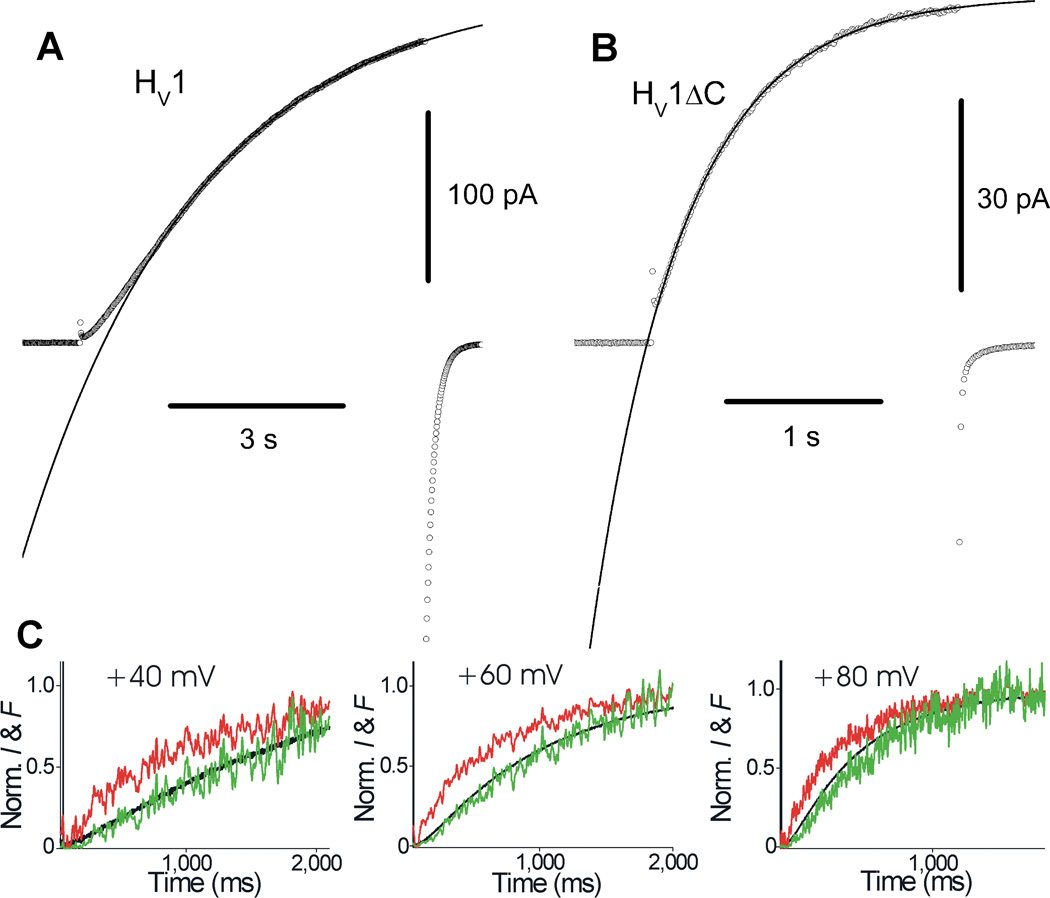Figure 3.
Gating kinetics of monomeric and dimeric hHV1 and CiHV1. The sigmoid activation of WT dimeric hHV1 channels (A) is contrasted with the more rapid and exponential turn-on of C-truncated channels (B), presumed to be monomeric. The curves are single exponential fits. In C the kinetics of current activation of CiHV1 at three voltages (black) is compared with the normalized fluorescence signal (red) emitted by a fluorophore tag attached to the top of the S4 domain. When the fluorescence signal is squared (see Scheme 2), it practically superimposes onto the current, consistent with a Hodgkin-Huxley-type gating mechanism in which both protomers must “activate” before either can conduct. A, B; Reprinted with permission from: Musset B, Smith SME, Rajan S, Cherny VV, Sujai S, Morgan D, and DeCoursey TE. Zinc inhibition of monomeric and dimeric proton channels suggests cooperative gating. Journal of Physiology 588, 1435–1449, copyright 2010. C; Reprinted by permission from Macmillan Publishers Ltd, Gonzalez C, Koch HP, Drum BM and Larsson HP. Strong cooperativity between subunits in voltage-gated proton channels. Nature Structural Molecular Biology 17, 51–56, copyright 2010.

